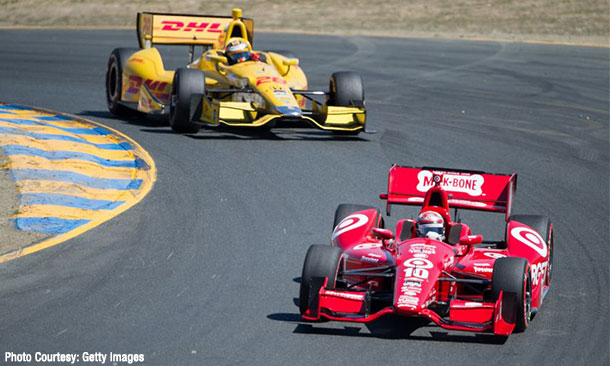IndyCar teams waiting on approval of homologated 'Aero Kits'
JAN 27, 2015
An important step in the development of “Aero Kits” that will debut in this year’s Verizon IndyCar Series took place on Jan. 18 with the “homologation deadline.” But these kits have yet to become public and it’s unlikely the kits will show up at the shops complete – it will be more of a piecemeal process.
INDYCAR officials received all the plans, drawings and 3D imagery from Chevrolet and Honda on Jan. 18. Once approved by INDYCAR, teams will receive the road/street and short oval kit by March 1. The Aero Kits will not be used in the season-opening race at Brasilia on March 8 but will debut at the Firestone Grand Prix of St. Petersburg on March 27-29. The speedway aero kit will be used in the 99th Indianapolis 500 on May 24.
"Because this is the first time for bodywork kits, INDYCAR altered the regulation last year to allow the manufacturers some time to supply the parts after they presented us with the CAD," said INDYCAR director of aerodynamic development Tino Belli, who is charged with the initial inspection and confirmation of the components. "What we didn't want was for them to produce parts only for us to ask them to modify those parts because they didn't meet regulations. That is why there is a gap between the presentations of the CAD to actually receiving the parts.
"We'll give them feedback, but we won't ultimately sign off on all the parts until measurements of the actual parts are completed. We'll check the weight of each part and by regulation every single bodywork component has to be able to fit the car all at the same time."
Though components are homologated, manufacturer updates are allowed within regulations. Additionally, teams will have multiple component options to add or remove to suit the car's set-up and driver based on the diverse set of tracks on the schedule.
"From a performance point of view, except for the sidepod and engine cover that have to remain fixed for two years, all of the other components are up for being upgraded," Belli said. "But they only are allowed to upgrade three legality boxes total in a two-year period.
"Currently, they can choose to homologate a new component in one of the three boxes any time from the beginning of the 2015 season to the end of the 2016 season. If one manufacturer feels it is behind in a particular configuration, it can bring forward a box to try to catch up earlier, pending INDYCAR approval. If you're feeling confident or comfortable, you'll want to delay upgrades until after you see how 2015 pans out with all the different racetrack configurations we go to.
"When components get changed the old components are grandfathered, so that way teams can still continue to use them, or use them as spares."
The homologation process was the latest step in a lengthy process regarding the aero kits. An intensive amount of work involving Honda and Chevrolet has gone into this program.
"This has been an exciting yet challenging project for everyone involved," Honda Performance Development vice president and COO Steve Eriksen said. "The amount of change permitted by INDYCAR is much broader than many fans may realize, and involved a lot of hours in search of performance prior to the first test pieces being created. The testing process has also been extensive, with our team working extremely hard to produce representative prototypes and gather as much information as possible over the six days of testing permitted by the series.
"We feel we've developed a very competitive Honda package for our teams, and we're looking forward getting on track and going head-to-head against Chevrolet in March. Our testing results, on both ovals and road courses, have been very promising and have backed up the performance predicted through CFD and our other development tools."
Chevrolet and Honda will offer two aero kits to each entrant with the price not to exceed $75,000 for each complete kit.
"It sort of felt like a three-year pregnancy and we're interested in moving past that and putting these babies on the track," Chevrolet Racing IndyCar program manager Chris Berube said. "We've passed a couple of important milestones - the track testing phase, which was sort of the culmination of all the aero, wind tunnel and analysis phases - and homologation, which we submitted a couple of days early.
"We're hot into the production side, which is an increasingly important step as well with some serious deadlines to meet. Teams are all waiting with baited breath to receive their first kits and it's all going to come together quickly.
"There are long-lead aspects to all of it. You have to have suppliers sourced and prepared to receive the designs and do the tooling and work through issues as they produce first parts. It's a serious parallel path to getting the design finished and getting feedback from the track testing and turn the crank on any design issues that are discovered. Now it's real and you have to execute."
















